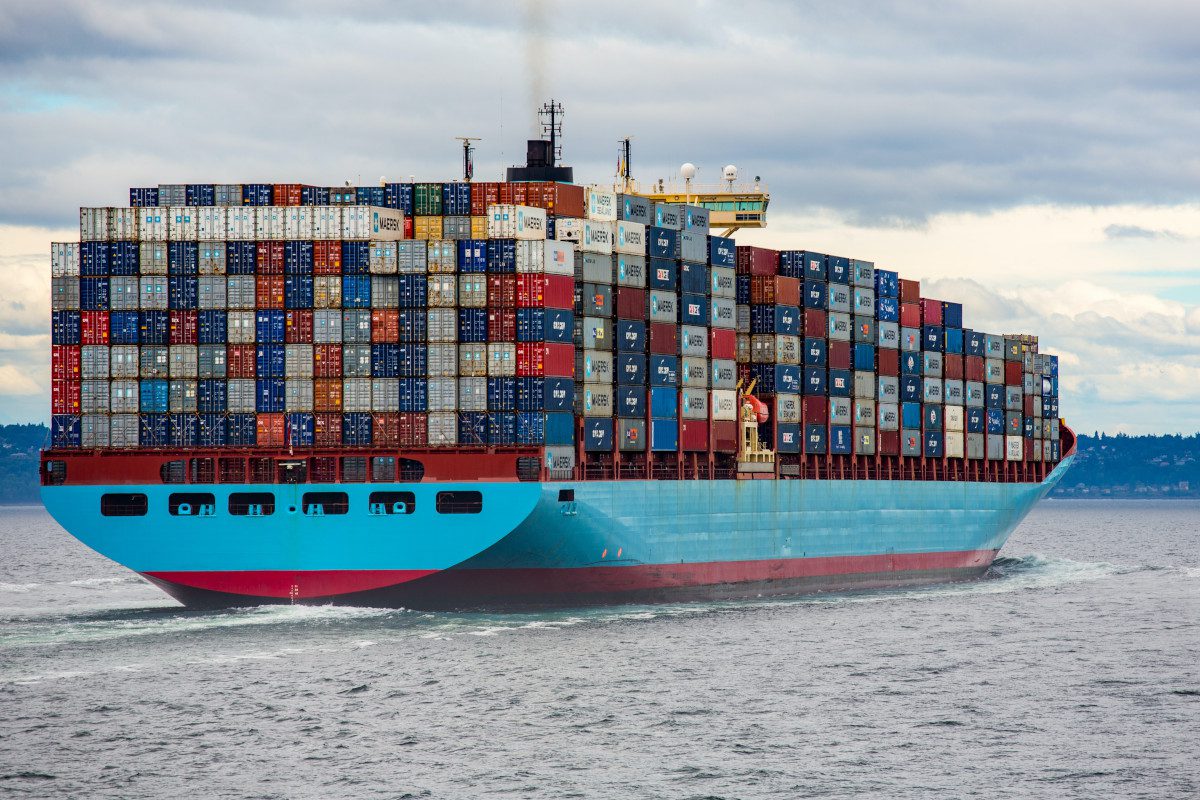
A new report from Stockholm Environment Institute reveals in detail the climate risks to global trade in major agricultural commodities – and concludes that they constitute a serious global challenge.
Leaders at the UN Food Systems Summit and upcoming climate change negotiations (COP26) must acknowledge the important links between climate change, food security, and trade, say the authors, and take action to build systemic resilience to climate impacts through multilateral cooperation.
Agriculture is one of the most exposed sectors to climate change. The report Climate change, trade and global food security – a global assessment of transboundary climate risks in agricultural commodity flows seemingly reveals for the first time in detail which countries are exposed to transboundary climate risks (TCRs) through agricultural trade and which countries are important sources of risk.
The report assesses six key commodities: staple commodities (maize, rice and wheat), highly embedded commodities (soy and sugar cane) and luxury commodities (coffee).
The results suggest that all countries are exposed to transboundary climate risks, regardless of development, power or wealth. Countries in Europe and North America are both highly exposed to TRCs via foreign imports, and can be major sources of risk for others who depend on their exports for food security. While addressing climate risks has historically been understood as a challenge for developing countries and adaptation planning has often been conducted at a national, regional or local level, the report argues this framing of adaptation is out of date and insufficient for achieving the Paris Agreement’s Global Goal on Adaptation.
“Achieving global food security is fundamentally linked to taking climate action,” says lead author Kevin M. Adams.
“Where climate change threatens agricultural production around the globe, countries can unwittingly import or export those risks to their trading partners. As we have seen with Covid-19, international trade and supply chains link our countries and communities together across great distances, for better and for worse. As we anticipate increased impacts due to climate change, the global community needs to come together to assure market stability and allow food to be purchased at affordable prices, or risk social upheaval and new geopolitical challenges,” says Adams.
The United States, China, and Brazil are significant sources of climate risk for global commodity markets. This is particularly problematic for importers that depend on that trade for food security or other economic activity. Key examples include countries in Central and Latin America and the Caribbean who depend on US imports, and countries in Asia and Africa who import food from China. Small Island Developing States and small, globally integrated countries like Singapore and Sweden are also especially vulnerable. In contrast, Russia, a large commodity exporter, may plausibly experience increased agricultural production due to climate change, including of maize, soy, and rice, though often not enough to offset risks elsewhere.
“Countries, companies, and communities don’t have enough visibility on their exposure to transboundary climate risks,” says Magnus Benzie, co-author and Research Fellow at Stockholm Environment Institute. “Adapting to climate changes requires that countries and companies work together across borders to improve climate resilience for everyone. There are opportunities for free trade agreements, and under WTO rules, to address transboundary climate risks, and all adaptation assessments need to include these risks.”
“Adaptation to climate change has long been a priority for developing countries. But our results underscore that it is in everyone’s interest to adapt, and to do so together. As an international community, we are only as resilient as the most vulnerable among us. There is an urgent need, and a clear opportunity, for multilateral cooperation around climate change and trade, including working together to invest in systemic resilience”, says Kevin Adams.
Overall the report concludes that traditional approaches to managing risk in supply chains, such as substituting high-risk links with more resilient ones, or hedging risk across a diverse spread of suppliers, are unlikely to prove effective over long term or more extreme scenarios. Climate change drives systemic risk and will occur everywhere at once. Therefore countries need to work together via multilateral institutions and processes to achieve the mutually-beneficial goal of systemic resilience in global agricultural markets.
Key findings per commodity
The report assesses the potential for future risks based on today’s pattern of international agricultural trade. It does not consider the dynamic effects of changes in trade patterns, improved technology or the effect of changes in commodity prices. It also assumes that global CO2 emissions stay on today’s trajectory. The report suggests that coordinated investments to build the resilience of key agricultural producers may be an important adaptation strategy that delivers shared benefits to producers and consumers.The methodology excludes extreme weather events, which means that the results are likely a conservative estimate of the overall level of systemic risk.Below are key results for each of the six commodities.
Maize
- Production may decrease by approximately 27.2% in the long-term (in the period 2070 to 2099), with climate risks to production in some countries and regions outweighing potential increases in others by a ratio of 43:1.
- Transboundary climate risks to trade in the maize market appear to disproportionately originate from North America, Latin America, and Europe, with Brazil, China, and the US playing an important role. Many of the riskiest trade links extend from the US to small island states in the Caribbean and Latin American countries, as well as to Israel.
- Russia, Canada, and Chile all stand to see increases in maize production.
Rice
- Results suggest that production may decrease by approximately 8.1% in the long-term, with a risk-to-opportunity ratio of 6:1.
- Climate risk in the rice market appears to be geographically concentrated in Southeast Asia and Latin America. Bilaterally, risky trade relationships originate primarily in Thailand or the US. The US is shown to be a key source of risk for Honduras, El Salvador, Guatemala, and Mexico, while Thailand exports to a broad array of countries in Asia, Africa and Europe.
- Russia appears as a plausible beneficiary in the rice sector, alongside North Korea. India and China are important producers and appear relatively less exposed to climate risks.
Wheat
- Of staple crops selected, the global wheat market appears to have the most promising outlook under climate change with a roughly balanced risk-to-opportunity ratio of 1:1. Production could potentially increase by 13.9 %.
- The US appears to be a critical source of transboundary climate risks in wheat trade, with a projected decrease of 64%, far surpassing production decreases in Canada, Russia, and China.
- France emerges strongly as a potential beneficiary for wheat production and trade, alongside Germany and Ukraine, Uzbekistan and Argentina.
- Several countries in East Africa can anticipate significant decreases to wheat yields, impacting their relatively smaller production bases. Several African countries are identified as particularly exposed to climate risks in US wheat production, including Nigeria.
Soy
- Results suggest that production may decrease by approximately 7.2% in the long-term, with a risk-to-opportunity ratio of roughly 2:1.
- Both the US and Brazil appear to contribute disproportionately to TCRs in the soy market, with the US far surpassing Brazil, while both are well beyond Bolivia, the third largest contributor. The US has many high-risk relationships, primarily in Latin America and Africa, while Brazil registers high-risk relationships as well, primarily with Europe.
- Argentina, which produces a similar amount of soy to the US and Brazil, could stand to increase soy production, as could Canada.
Sugar cane
- Sugar cane is the most highly-traded of the six commodities by volume and faces the biggest overall yield losses as a result of climate change with an estimated decrease globally of 58.5%. The risk-to-opportunity ratio is roughly 25:1.
- Both risk exposure and opportunities for growth are concentrated in the Global South, with Brazil, Thailand, India, Cuba, and China – all major sugar-cane growers – likely to introduce significant risk to the global sugar-cane market in a warming world.
- Argentina and South Africa appear well-placed to make up a portion of this shortfall.
Coffee
- Both Arabica and Robusta coffee are extremely at risk due to climate change, with very few increases to coffee production anticipated in a warming world. The results suggest that Arabica production may decrease by 45.2% with a risk-to-opportunity ratio of 1560:1. The equivalent numbers for Robusta are 23.5 % and 336772:1.
- In the Arabica market, Brazil is by far the most critical source of TCRs, while in the Robusta market, this role is shared evenly between Viet Nam, Brazil, and Indonesia.
- Marked decreases in the area suitable for coffee production are expected throughout the full “coffee belt.”






